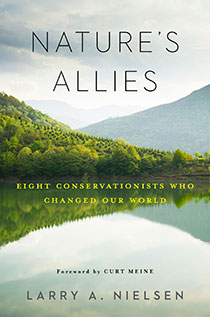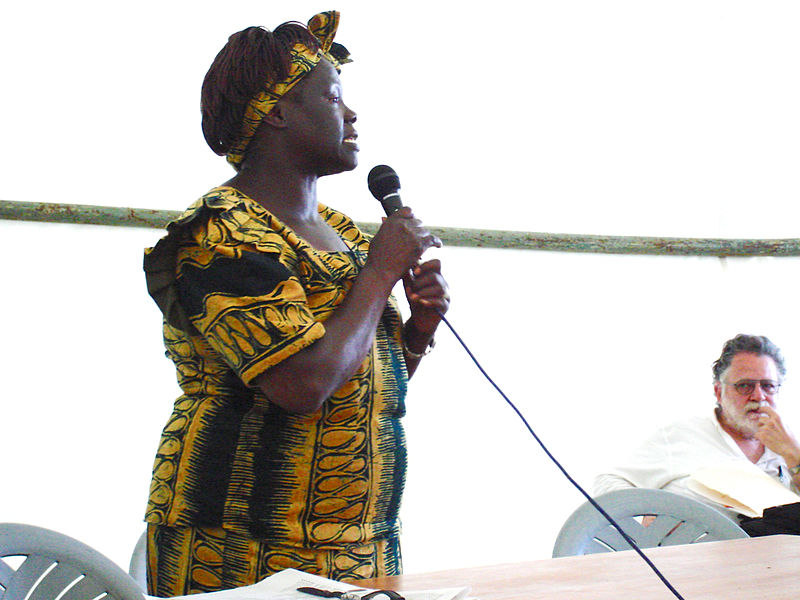Given election results that have further empowered political leaders who deny climate change, it’s easy to feel powerless in the face of environmental challenges like massive deforestation, biodiversity loss, and dying oceans. At a time when it seems like we are moving backwards and progress is stalled by partisanship and bureaucracy, conservation success stories provide the inspiration and courage needed to move forward. Nature’s Allies, which tells the stories of eight great conservationists who overcame great odds to bring about astonishing change, supplies that inspiration. Here, author Larry A. Nielsen provides ten fun facts about these inspiring conservationists.
- John Muir was not only an ardent conservationist, but he was also an obsessive inventor. As a young man, he designed and built a mechanical bed that tilted up and tossed him on the floor when it was time to start the day.
- Muir may have been the father of American conservation, but he never really thought of himself as an American. He considered that he owed his loyalty to the earth, not to any nation. He even “skedaddled” to Canada to dodge the draft during the Civil War.

1934-35 United States Department of Agriculture migratory bird hunting stamp depicting mallards by Jay N. "Ding" Darling, chief of the U.S. Biological Survey. Photo via Wikimedia Commons - Ding Darling was a political cartoonist, and, as such, he held strong political beliefs. He greatly admired Herbert Hoover, but abhorred the policies and actions of Franklin Roosevelt. Nonetheless, he accepted Roosevelt’s offer to become Chief of the Biological Survey and reset America’s conservation direction.
- The first federal Duck Stamp was drawn by Darling—on the back of a shirt cardboard. Pressed for ideas and without drawing supplies, Darling slipped the cardboard from a freshly laundered shirt and sketched a pair of Mallard ducks landing in a marsh. The rest is history!
- Aldo Leopold is famous for his book of essays, A Sand County Almanac. But it was rejected repeatedly by publishers before Leopold’s son finally negotiated an agreement. And then it was largely ignored by the reading public when published in 1949. Only later, when a paperback edition was re-issued in the 1970s, did it become the ecological bible it is considered today.

Read more about these conservaitonists in Nature's Allies - Today, we would call Rachel Carson a “shrinking violet,” extremely shy and private. So much so that when Silent Spring became a best-seller, she avoided almost all interviews and publicity. Yet it was her eventual appearance on the TV news program, CBS Reports, that convinced America she was right—and a new environmental era began.
- Chico Mendes, the Brazilian rainforest advocate and union leader, never had any money. So when he was invited to the U.S. to campaign for protecting Brazil’s forests, he had nothing to wear. A home-town charity provided the solution—a crumpled gray suit that more-or-less matched his rotund figure. Nonetheless, his charisma won the day, and a new future for the Amazon.
- Billy Frank Jr. was arrested more than fifty times in his battle for Native American treaty rights to catch salmon. But he never held a grudge. Instead, he made friends with everyone he met, whether a local game warden, a corporate CEO or the President of the United States.

Wangari Maathai speaking about deforestation at the World Social Forum.Photo via Wikimedia Commons - When Wangari Maathai’s husband divorced her because she wasn’t a good Kenyan wife—too independent and willful—she had a dilemma. She couldn’t keep her married name, Mathai, and didn’t want to revert to her maiden name. So, she ingeniously added another “a” to the spelling and became the Wangari Maaathai we know today.
- Gro Harlem Brundtland is known as the godmother of sustainability, but she greatly angered environmentalists everywhere when she reinstated commercial whaling as Norway’s prime minister. Her actions were consistent, she believed, because whales are renewable natural resources and Norway managed them sustainably.


